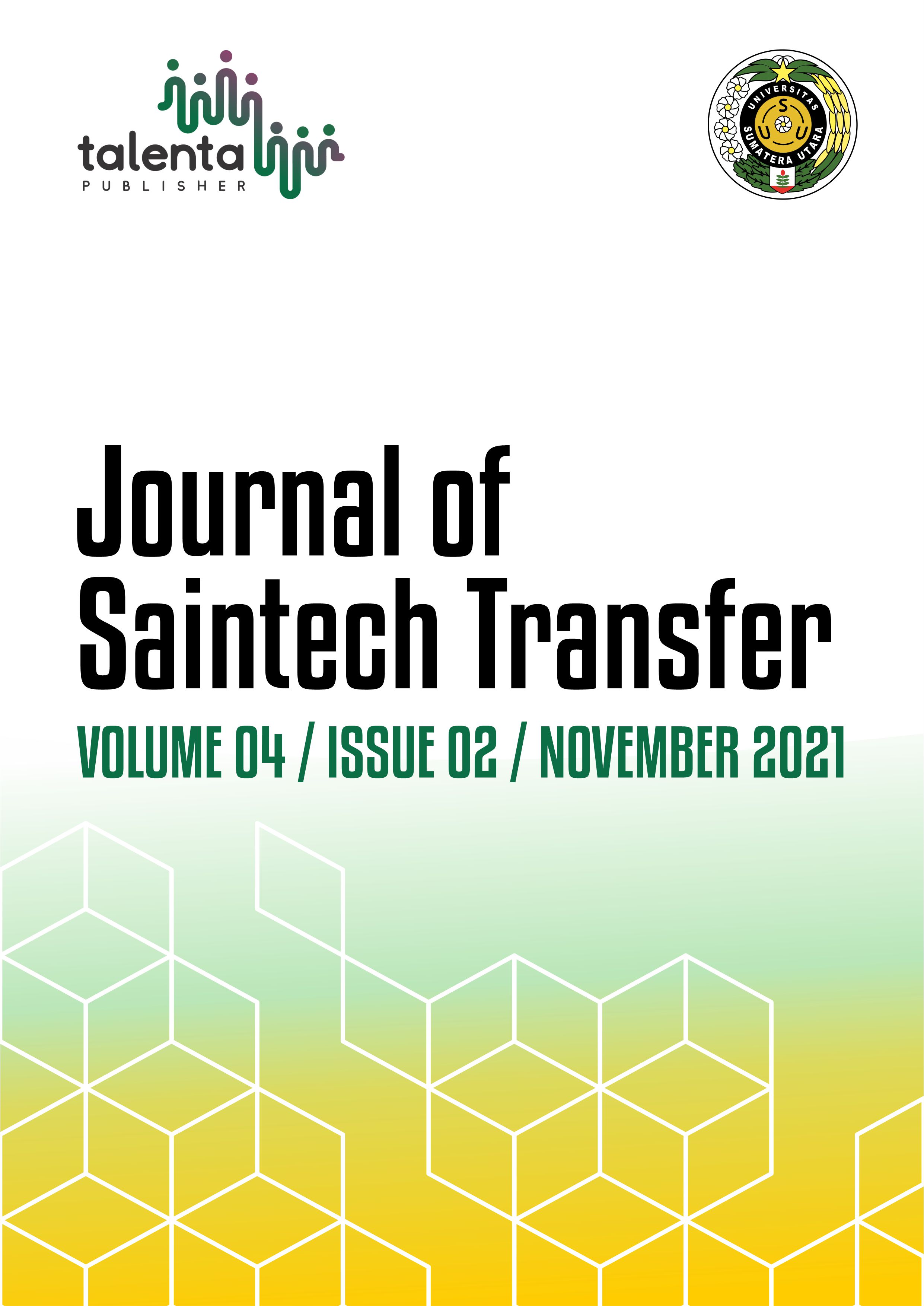Awareness-Raising Program of Anemia Using Comics and Social Media for Teenage Girls
DOI:
https://doi.org/10.32734/jst.v4i2.7790Keywords:
Anemia Prevalence, Blood Boost Formula, Awareness-Raising Program, Teenage GirlsAbstract
Nutritional problems that teenagers often experience are malnutrition, overweight, obesity and anemia. Risk of anemia in teenage girls is higher than in boys because of the increased demand of iron during the menstruation period. However this also becomes problematic because girls often limit their food intake. Blood Boost Formula is often prescribed to prevent anemia in teenage girls. The purpose of this community dedication activity is to find out about the compliance with consuming Blood Boost Formula, anemia prevalence and knowledge improvement of the audience after the program. This community dedication activity used comics and social media such as WhatsApp group. The target of this activity is 47 teenage girls of SMK Budi Nasional Tebing Tinggi students. Measured parameters for evaluation are medication compliance with consuming Blood Boost Formula, the degrees of awareness in anemia using questionnaire and anemia prevalence through Hemoglobin test using digital test. The results are showing that 69% of the students are not complying with the medication. There are 34% anemia prevalences. The pretest score was 20 points at the lowest and 60 points at the highest. While the post-test score was 27 points at the lowest and 67 points at the highest. There is an increase of mean value between pretest and post-test by about 10 points.
Downloads
References
H. Masthalina, Y. Laraeni, and Y.P. Dahlia, “Consumption patterns (factor inhibitors and enhancer Fe) to status of anemia adolescentâ€. Kemas. vol. 11. pp. 80-86. 2015.
A. Mubarokah, A. Sortono and J.T. Isworo. (2014, September 12). The Relationship Between Nutrition Knowledge and Food Safety With Instant Noodle Consumption in Student at High School Pondok Pesantren Asy-Syarifah Mranggen Demak [Online]. Available: http://digilib.unimus.ac.id/files/disk1/149/jtptunimus-gdl-ainimubaro-7447-1-artikel-i.pdf.
F.F. Dieny, “Nutrition Problem in Adolescent Womenâ€. Yogyakarta: Graha Ilmu, 2014.
T. Caturiyantiningtiyas. (2014, September 15). The Relationship Between Knowledge, Attitudes and Behavior with Anemia Prevalensi for Teenage Girls in Class X and XI SMA Negeri 1 Polokarto. Universitas Muhammadyah Surakarta [Online]. Available: http://eprints.ums.ac.id/39689/1/NASKAH%20PUBLIKASI.pdf
A. Subiyatin and L. Mudrika, “Knowledge associated with adolescent anemia in the Modern Islamic Boarding School Ummul Qura Al-Islam Bogor in 2016â€. J Kedokteran dan Kesehatan. vol. 13. pp. 28-34. 2016.
M. Rotua, “The effectiveness of nutrition education on improving iron, protein, and hemoglobin levels in SMA negeri 14 Palembang studentsâ€. Jurnal Kesehatan Palembang. vol. 12. pp. 161-168. 2017.
D. Lestrina, I. Nurhayati and O. Martony, “The effect of health promotion on increasing knowledge and hemoglobin levels for women of reliable age in Paluh Kemiri village Lubuk Pakam districtâ€. Wahana Inovasi. vol. 4. pp. 80-91. 2015.
E. Tarigan and U. Sihotang. (2019). The relationship of knowledge about anemia and the status of anemia in adolescent women in Trisakti Private School, Lubuk Pakam [Online]. Available:http://ecampus.poltekkesmedan.ac.id/jspui/bitstream/123456789/1486/1/KTI%20ENDA.pdf.
Nurbaiti, “Factors related to anemia in adolescent women in SMA Negeri 11 banda aceh in 2013â€. Jurnal StiKes Ubudiyah Banda Aceh. 2013.
S.B. Cahyono, “Increasing student knowledge about anemia after getting nutritional education with animation video mediaâ€. Jurnal UMS. pp. 2-12. 2015.
S. Laksmita and H. Yenie, “The relationship of adolescent women's knowledge about anemia with the event of anemia in Tanggamus districtâ€. Jurnal Keperawatan. vol. 14. pp.104-107. 2018.
C.D.T. Wibowo, H. Notoatmojo and A. Rohmani. “The relationship between nutritional status and anemia in adolescent girls at Muhammadiyah 3 Junior High School Semarangâ€. Jurnal Kedokteran Muhammadiyah. vol. 1. pp. 1-5. 2013.
N.R.D. Safitri and D.Y. Fitrant. “The effect of nutrition education with speech and booklet on improve nutrition knowledge and attitude in overweight adolescentâ€. Journal of Nutrition College. vol. 5. pp. 375-380. 2016.
A.D. Saputro. “Comic applications as learning media Muaddibâ€, vol 5. 2015.
World Health Organization (WHO). 2015. The Global Prevalence Of Anaemia In 2011. Geneva
D. Nursari. “Overview of the incidence of anemia in adolescent girls SMP Negeri 18 Bogor City in 2009â€. Universitas Islam Negeri Syarif Hidayatullah. 2010.
I. Cahyaningsih, C. Wiedyaningsih, S.A. Kristina, “The effect of counseling on the level of public knowledge about analgesics in Cangkringan Sleman District. Mutiara Mediaâ€. Jurnal Kedokteran dan kesehatan. vol. 13. pp. 98-104. 2013.
R. Anggraini, “Relationship between knowledge and attitudes of pregnant women in preventing anemia at the Rumbai Health Centerâ€. Jurnal Endurance. vol 2. 2017.
Downloads
Published
How to Cite
Issue
Section
License
Copyright (c) 2022 Journal of Saintech Transfer

This work is licensed under a Creative Commons Attribution-ShareAlike 4.0 International License.















